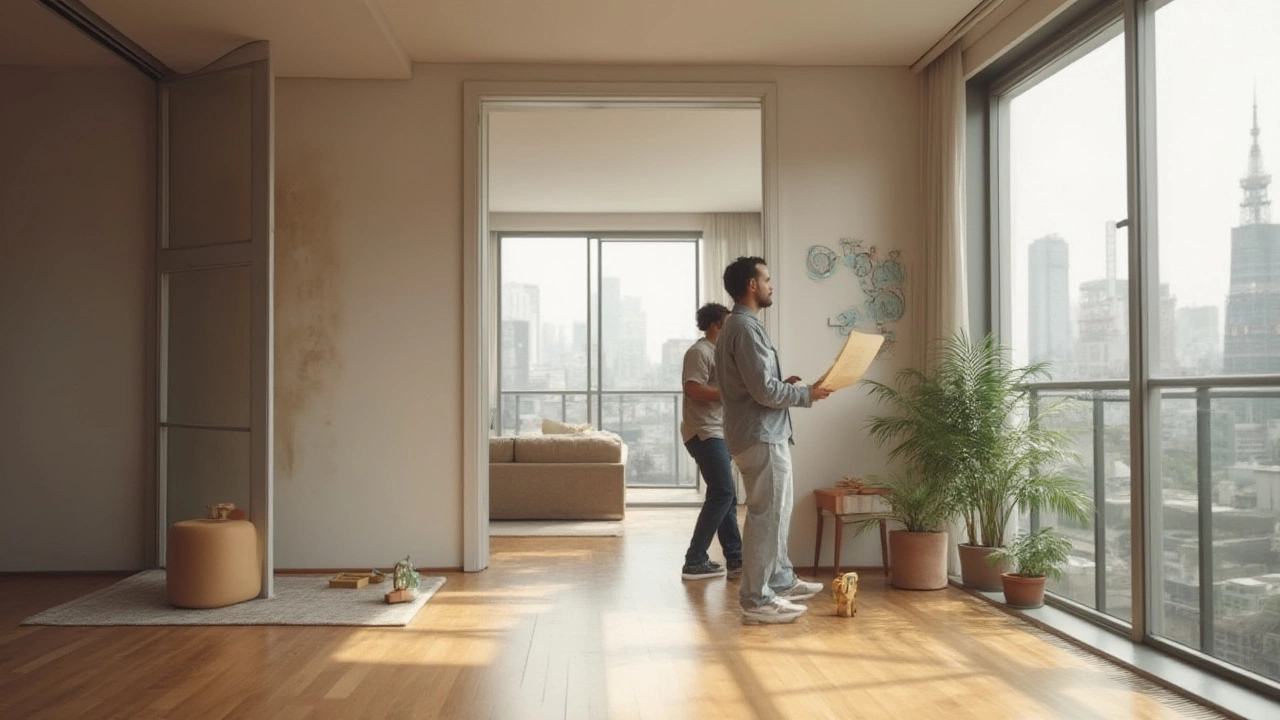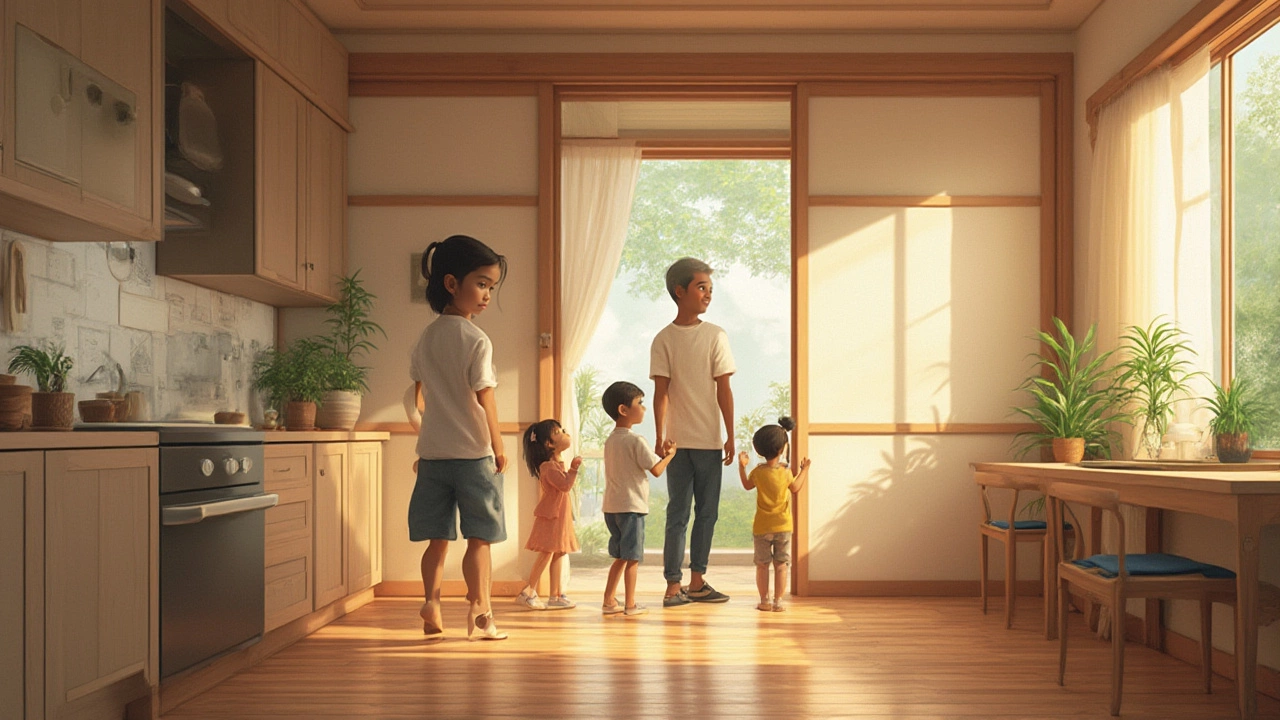You know how sometimes there’s a housing term that sounds like it belongs in a math textbook or a secret code? 3DK apartment is definitely one of those, at least until you crack what it really means. Picture walking into an apartment listing, expecting the usual bedrooms-bathrooms rundown, and instead you hit “3DK.” If you're new to Japanese real estate, you might freeze for a second, maybe squint at the screen—what’s with those letters? Is this a game? Spoiler: it’s not, but it can feel like one while you figure it out.
For most of us, home means comfort, memories, maybe the chaos of kids running around—like my son Rohan, who manages to discover the only sticky spot on the table every single morning. But spaces in Japan come with their own logic, and that’s where the 3DK concept enters. Let’s open the door and see what’s actually inside.
What Does “3DK” Really Mean?
Alright, so here’s the mystery decoded: the “3” stands for three separate rooms, and “DK” means dining-kitchen—a combined space for eating and cooking. Simple once you know, but incredibly specific to Japan’s legendary housing vocabulary. Japanese apartments are categorized by these space codes, so you’ll find “1K,” “2LDK,” “3DK,” and so on. The letters never change; their order, however, is a mini-Jenga game. “L” is living room, “D” is dining, “K” is kitchen. So, a 3DK is three rooms plus a shared dining-kitchen area. Usually, these rooms are flexible—they could be bedrooms, offices, playrooms for your little one, or a sacred spot where you stash the laundry nobody’s allowed to see.
The history here is fascinating. Back in the economic boom after World War II, Japan needed compact, multi-functional homes to cram into dense cities like Tokyo and Osaka. The DK format popped up as a way to fit family needs into much less space. As people’s lives evolved, so did these codes, but “3DK” has stayed surprisingly stable and popular.
Space in cities is at a premium, so creativity wins over size. In a typical 3DK, the three rooms wrap around a central corridor, away from the dining-kitchen area. This keeps eating and sleeping (and sometimes studying or working from home) as separate as possible. You won’t find sprawling open-plan designs like those in Miami or Melbourne, but you will find walls and sliding doors ready for a quick privacy boost—which is priceless when Rohan starts his one-boy band right in the middle of the living area.
In terms of numbers, a traditional 3DK can have 50 to 65 square meters, sometimes a bit more. For context, that’s about the size of a modest two-bedroom apartment elsewhere—but with tighter separation between rooms. Tenants can divide spaces as fits their lifestyle, so apartments often morph to fit different family sizes. Dating back to data from the Japan Ministry of Land, Infrastructure, Transport and Tourism, a 3DK is typically seen as suitable for families with more than one child—or multi-generational households, which are quite common in Japan.
How Does a 3DK Compare to Other Japanese Apartment Types?
If you start browsing Japanese rental sites, get ready for an alphabet soup of layouts. So what really puts a 3DK on the map compared to its closest siblings?
| Layout Type | Number of Rooms | Living Area? | Usual Size (sqm) |
|---|---|---|---|
| 1K | 1 | No | 20–30 |
| 2DK | 2 | No | 40–50 |
| 2LDK | 2 | Yes | 50–65 |
| 3DK | 3 | No | 50–70 |
| 3LDK | 3 | Yes | 60–85 |
Here’s the thing: The “L” in a 3LDK means there’s an official living room (bigger, with space for a comfy sofa and TV). The 3DK, on the other hand, usually offers three rooms and a smaller area for kitchen and dining combined. This means you sometimes sacrifice a bit of big open space, but you gain privacy and practicality. For families juggling school, work-from-home, and all the insanity that comes with kids or elderly relatives, doors are your friends.
Bumping up to a 3LDK can cost 20–30% more in Tokyo. According to Suumo (Japan's biggest real estate portal), the median rent in central Tokyo for a 3DK hovered around 140,000–190,000 yen per month in 2024, depending on neighborhood. That’s usually $1,000 to $1,400 USD. A 3LDK of the same size fetches 30,000–40,000 yen ($200–300 USD) higher, mostly because everyone wants that “L.”
The key draw with 3DKs is flexibility. It lets a family treat one room as a bedroom, a second as a study (or a Lego fortress, if you’re my kid), and a third as a guest room or grandparent’s retreat. If you’ve ever tried to work in an open-plan apartment while your child re-enacts an entire Marvel movie, you know why this is a big deal.
Still, be aware—not all 3DK units are made equal. Some, built in the ‘80s and ‘90s, may have smaller kitchens or design quirks compared to newer builds. But many are being renovated, keeping the handy layout and swapping out tatami mats and ancient fixtures for fresh finishes. So if you appreciate structure but not stuck-in-the-past, you can score some cool hybrids.

Who Should Consider a 3DK Apartment?
If you’re single and a minimalist, a 3DK might actually feel a bit much. It’s definitely not the hipster’s tiny studio or the digital nomad’s one-room setup, unless you’re planning to host surprise slumber parties every weekend. Where it really shines is for young families, couples hoping to grow their household, or anyone living with parents or in-laws. In fact, surveys by Recruit Sumai Company in 2024 showed that 3DKs are especially popular with working couples with one or two kids, as well as students sharing costs.
The flexibility is unbeatable. Let’s say your job suddenly goes fully remote—one of the three rooms morphs into a home office. Or maybe you have a toddler and a newborn on the way, and the last thing you want is nap time and playtime in the same breath. Those doors between rooms get put to excellent use.
But the benefits don’t end with flexibility. 3DKs are often more affordable than trendy open-plan types. Families can often rent or buy a 3DK for less than a 3LDK, even in huge urban centers. For budgeting households who want breathing space without splurging on the priciest square meter, this can be a real lifesaver. It certainly helped us a couple of times while job-hunting in Tokyo.
If you’re looking to buy and not rent, 3DKs have another perk—they’re typically in mid-rise or traditional apartment blocks, meaning more mature neighborhoods with schools, playgrounds, and good public transport nearby. Since so many families lived in this format in the past, schools and clinics are built practically next door. This is huge when you’re running late, and your child (like Rohan) forgets his backpack again.
Practical Tips: What to Consider Before Moving Into a 3DK
So let’s say you’re eyeing a 3DK for your next home. Before signing that lease, here’s what I wish someone told me early on:
- Check the storage. Older 3DKs might not have walk-in closets. Use vertical space—install shelves above doors, double up on wardrobe storage, and don’t be afraid to add underbed boxes. Japanese apartments are storage ninjas, but you have to get creative.
- Look at the room sizes. Not every “room” is created equal. Tatami rooms, for example, use “jo” as a size unit—1 jo is about the size of one tatami mat (roughly 1.6 sq. meters). Pay attention in the listings so you’re not surprised.
- Test the kitchen setup. Some 3DKs squeeze the kitchen to save on space. If you love cooking (or at least want to avoid bumping elbows at dinner), measure counters before moving in.
- Ask about soundproofing. Older buildings often have thinner walls. If you have a future drummer in the family or just enjoy late-night movies, search for reinforced or recently refurbished blocks.
- Check transport links and neighborhood services. Convenience is a dealbreaker, and most 3DKs are near stations or bus lines. Still, walk the area at different times if you can. Check for waiting lists at local schools or daycares—big deal if moving with kids!
I’ve also learned not to overlook sunlight. Many 3DKs tuck dining-kitchen areas in less sunny spots, so if you’re big on morning light with your coffee, peek at the windows and view direction.
For buying, make sure you get a floor plan translated—Japanglish can get wild (“closet” sometimes means “shelf,” which is not the same thing when you have as many jackets as my wife). Also, confirm maintenance fees and age of the building. Places built in the 1970s can be charming but may hit you with higher utility bills or renovation costs.
Last tip: Japanese landlords can be strict about modifications. Always ask permission before painting, adding hooks, or switching flooring, or your move-out deposit could vanish faster than a second slice of cake at Rohan’s birthday party.
So next time you stumble into a 3DK listing, remember you’re looking at a piece of practical, adaptable Japanese history shaped for real life. For families, couples, or anyone who values privacy with a dash of flexibility (and not breaking the bank), a 3DK could just be your next favorite address.
